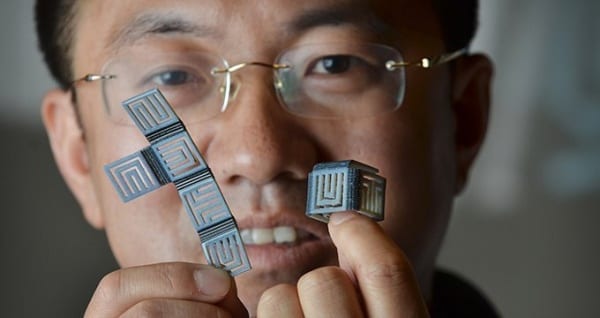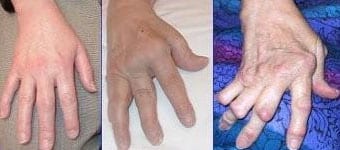
Jack and his family with Dr. James Drake following treatment of his osteoid osteoma.
A patient at The Hospital for Sick Children (SickKids) is the first child in North America to have undergone a specialized procedure that uses ultrasound and magnetic resonance imaging (MRI) to destroy a tumour in his leg without piercing the skin.
Doctors used an MRI to guide high-intensity ultrasound waves to destroy a benign bone tumour called osteoid osteoma. The lesion had caused 16-year-old Jack Campanile excruciating pain for a year prior to the July 17 procedure. By the time he went to bed that night, the athletic teen experienced complete pain relief.
In previous decades, osteoid osteoma was treated with orthopaedic surgery that involved scraping the tumour from the bone or removing the affected part of the bone. The procedure was very painful and the recovery could take many weeks. Since the mid-1990s, minimally-invasive treatments have been used to burn the tumour; in these treatments, radiofrequency or laser energy is delivered through a needle placed in the tumour using computerized tomography (CT) guidance. These therapies are effective and less risky than invasive surgery, and are currently widely used. However, these procedures still carry risks, including radiation exposure, infection, burning of the surrounding tissue, and bone fractures resulting from the hole that remains following treatment of the tumour.
High-intensity focused ultrasound therapy uses sound waves to heat an area the size of a grain of rice, under MRI guidance, to destroy the tumour. The treatment is completely non-invasive, so the skin and surrounding bone remain intact, greatly reducing the risk of complications like infections. The use of MRI rather than CT scan to guide the sound waves means the patient avoids exposure to radiation. The risk of bone fracture is also likely lower than in other treatments, and recovery is quick. An added benefit is rapid pain relief.
Read more . . .
The Latest on: Incisionless surgery
[google_news title=”” keyword=”Incisionless surgery” num_posts=”10″ blurb_length=”0″ show_thumb=”left”]
via Google News
The Latest on: Incisionless surgery
- Surgery May Be More Cost-Effective Than Wegovy in Adults With a BMI 35+on April 11, 2024 at 9:00 pm
In an analysis of adults with class II obesity (BMI 35-39.9), endoscopic sleeve gastroplasty (ESG) added 0.06 more quality-adjusted life-years while costing $33,583 less than semaglutide (Wegovy) over ...
via Bing News










